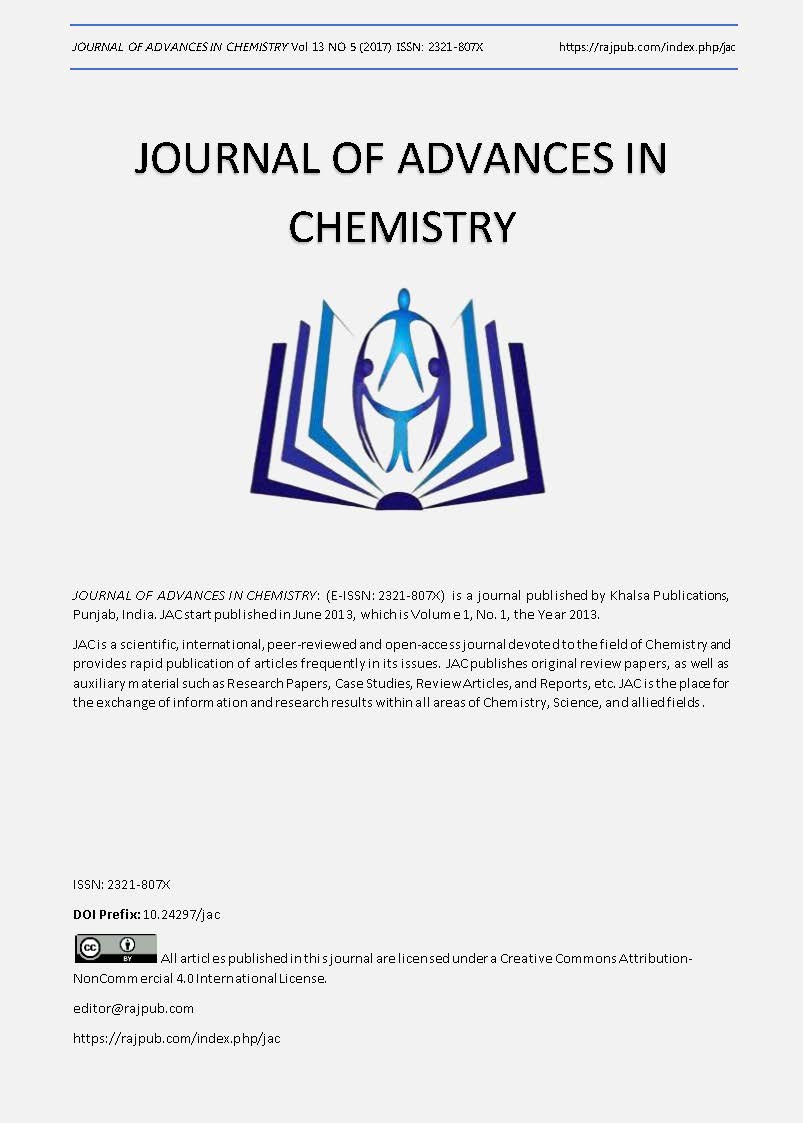Corrosion inhibition studies and Solvation Analysis of Pyridine N-oxides by Polarizable Continuum Model method
DOI:
https://doi.org/10.24297/jac.v13i5.5680Keywords:
DFT studies, Solvation analysis, Pyridine N-oxidesAbstract
Solvation analysis and corrosion inhibition studies has been carried out for pyridine N oxide, 3-carboxypyridine N-oxide and 2-methylpyridine N- oxide in polar and nonpolar solvents having a wide range of dielectric constants. The test set consists of water, methanol, ethanol, acetone, dichloromethane, chlorobenzene, chloroform, toulene, benzene and carbon tetrachloride. The physical properties of the systems such as free energies of solution, electrostatic interaction, dispersive energies, repulsive energies and dipole moments are discussed. Quantum mechanical self consistent fields explain the properties of the compounds satisfactorily.
Downloads
References
242.
[2]. Hari Ji Singh & Priyanka Srivastava, Indian J Pure & Appl Phys, 47(2009) 557.
[3]Yadav B S, Israt Ali, Pradeep Kumar & Preeti Yadav, Indian J Pure & Appl
Phys,45 (2007) 979
[4]. Bereket G, Ogretir C & Yurt A, J Mol Struc Theochem, 571 (2001) 139.
[5]. Bentiss F, Traisnel M, Vezin H & Lagrenee M, Corrosion Sci,45 (2003) 371.
[6]. S.Mahalakshmi, R.Raj Mohamed, V. Kannappan, V.Sathyanayanamoorthi, Ind J Pure and
App. Phy, 52 (2014) 19
[7] Tomasi J & Persico M, Chem Rev, 94(1994) 2027.
[8]. Cramer C J & Truhlar D G, Chem Rev, 99(1999) 2161.
[9]. Tomasi J, Mennucci B & Cammi R, Chem Rev, 105(2005)2999.
[10]. Chamberlin A C, Cramer C J & Truhlar D G, J Phys Chem., B110 (2006) 5665.
[11]. Fuke K, Yoshiuchi H, Kaya K & Becke A D, J Phys Chem, 88 (1984) 5840.
[12]. Stephens P J, Devlin F J, Chabalowski C F & Frisch M J, J Phys Chem., 98 (1994) 11623.
[13]. Dewar M J S, Zoebisch E G, Healy E F & Stewart J J P, J Am ChemSoc, 107 (1985) 3902.
[14]. M.J. Frisch et al, Gaussian 03, Revision A.I, Gaussian,
Inc, Pittsburgh, PA, 2003.
[15].V.Sathyanarayanamoorthi, U.Ponnambalam, S.Gunasekar and V.Kannappan,
J.Mol.Liquids, 129(2006)181
[16]. Miertus S, Scrocco E & Tomasi J, Chem Phys, 55 (1981) 117.
[17]. Winget P, Thompson J D, Cramer C J & Truhlar D J, J Phys Chem. A, 106 (2002) 5160.
[18]. M.Seefelder, M.Henlius, H.Quast, W.D.Edwards, J.R.Armantront, R.V.Williams,
C.J.Cramer, A.C.Goren, D.A.Hrovat and W.T.Borden, J.Org.Chem, 70, (2005) 3437.
[19]. J.D. Giesen, C.C. Chambers, C.J. Cramer and D.G. Truhlar, J. Phys.
Chem., 101, 2061 (1997).
[20]. Sathyanarayanamoorthi V, Mahalakshmi S & Kannappan V, J Mol Liq, 154 (2010) 88.
[21]. Kikuchi K, Quant Struct-Act Relat, 6 (1987) 179.
Downloads
Published
How to Cite
Issue
Section
License
 All articles published in Journal of Advances in Linguistics are licensed under a Creative Commons Attribution 4.0 International License.
All articles published in Journal of Advances in Linguistics are licensed under a Creative Commons Attribution 4.0 International License.




